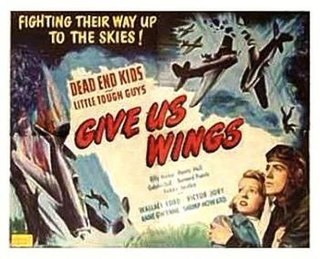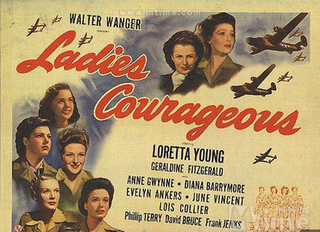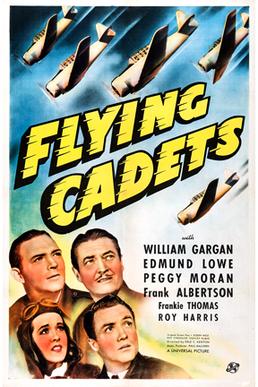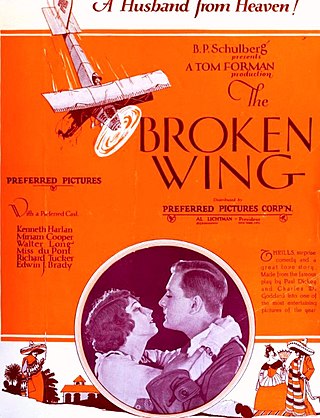
Air Force is a 1943 American World War II aviation film directed by Howard Hawks and starring John Garfield, John Ridgely, Gig Young, Arthur Kennedy, and Harry Carey. The film was distributed by Warner Bros. and produced by Hal B. Wallis and Jack L. Warner. Conceived by then - Lieutenant General “Hap” Arnold in the aftermath of the Pearl Harbor attack, it was originally scheduled for release on December 7, 1942, on the first anniversary. It became impossible to meet that deadline, and it premiered in New York City on February 3, 1943 and was released on March 20. The film's storyline revolves around an actual event that occurred on December 7, 1941. An aircrew ferries an unarmed 1940 series Boeing B-17D Flying Fortress heavy bomber, named the Mary-Ann, across the Pacific to the United States Army Air Forces base at Hickam Field. They fly right into the middle of the Japanese air attack on Pearl Harbor and the beginning of America's major involvement in the Second World War. An uncredited William Faulkner wrote the emotional deathbed scene for Ridgely, who played the commander and pilot of the Mary-Ann.

Flying Tigers is a 1942 American black-and-white war film drama from Republic Pictures that was produced by Edmund Grainger, directed by David Miller, and stars John Wayne, John Carroll, and Anna Lee.

Wing and a Prayer, The Story of Carrier X is a black-and-white 1944 war film about the heroic crew of an American aircraft carrier in the desperate early days of World War II in the Pacific theater, directed by Henry Hathaway and starring Don Ameche, Dana Andrews and William Eythe. Although arguably a classic propaganda movie, it was appreciated for its realistic portrayal and was nominated for the 1944 Academy Award for Best Original Screenplay.

Fighter Squadron is a 1948 American World War II aviation war film in Technicolor from Warner Bros., produced by Seton I. Miller, directed by Raoul Walsh, that stars Edmond O'Brien, Robert Stack, and John Rodney.

The Capelis XC-12 was a failed 1933 aircraft design that most notably was used as a prop in the films Five Came Back, The Flying Tigers, The Falcon in Danger, and Immortal Sergeant. The aircraft featured unusual twin horizontal tail structures supported by three vertical tail surfaces. Construction and finishing methods involved using sheet metal screws which ultimately led to the abandoning of the project.

Winged Victory is a 1944 American drama film directed by George Cukor, a joint effort of 20th Century-Fox and the U.S. Army Air Forces. Based upon the 1943 play of the same name by Moss Hart, who also wrote the screenplay, the film opened only after the play's theatre run. The film version of Winged Victory used many of the Broadway cast, who were brought to Hollywood.

Death in the Air is a 1937 American film directed by Elmer Clifton and starring Lona Andre, John Carroll, Leon Ames and Henry Hall. The film is also known as Murder in the Air in the United Kingdom and as The Mysterious Bombardier. The film was Fanchon Royer's first production for her new company, Fanchon Royer Features, Inc. Film Daily reported that former FBI agent Melvin Purvis was offered a role in the film but declined.

Give Us Wings is a 1940 Universal comedic film starring the Dead End Kids and the Little Tough Guys. Several members of the casts of those series were also featured in "The East Side Kids" films.

Ladies Courageous is a 1944 war film based on the novel Looking For Trouble (1941) by Virginia Spencer Cowles. Directed by John Rawlins, the film stars Loretta Young and Geraldine Fitzgerald. It tells the story of the paramilitary Women's Auxiliary Ferrying Squadron formed in the United States during World War II. Film historians and scholars consider Ladies Courageous an à-clef story of famed aviator Jacqueline Cochran and test pilot Nancy Harkness Love's work to mobilize women pilots to contribute to the war effort.

Young Eagles is a 1930 American pre-Code romantic drama film directed by William A. Wellman for Paramount Pictures. It stars Charles "Buddy" Rogers, Jean Arthur, and Paul Lukas. The story is based on the stories "The One Who Was Clever" and "Sky-High", written by American aviator and war hero Elliott White Springs. The film's hero is a "heroic combat aviator of the Lafayette Escadrille".

Border Flight is a 1936 American aviation drama film directed by Otho Lovering and written by Stuart Anthony, Arthur J. Beckhard and Ewing Scott. The film stars Frances Farmer, John Howard, Roscoe Karns, Robert Cummings, Grant Withers and Samuel S. Hinds. Border flight was based on the exploits of the US Coast Guard pilots, based in San Diego. In Aviation in the Cinema (1985), aviation film historian Stephen Pendo considered Border Flight, a drama that "detailed the aerial activities of the United States Coast Guard fighting a gang of smugglers."

The Purple V is a 1943 American war film directed by George Sherman and starring John Archer, Mary McLeod and Fritz Kortner. The Purple V marked German stage star Fritz Kortner's American film debut. Actors John Archer and Mary McLeod were borrowed from M-G-M for the production.

20,000 Men a Year is a 1939 American action film directed by Alfred E. Green and written by Lou Breslow and Owen Francis. The film stars Randolph Scott, Preston Foster, Margaret Lindsay, Mary Healy, Robert Shaw, George Ernest, Jane Darwell, Kane Richmond and Maxie Rosenbloom. It was the fourth and last film produced by Cosmopolitan Pictures in its final year of operation.

Captain Swagger is a 1928 American synchronized sound crime drama film directed by Edward H. Griffith and stars Rod La Rocque. While the film has no audible dialog, it was released with a synchronized musical score with sound effects utilizing the RCA Photophone sound-on-film sound system. The film was released with both the sound-on-disc and sound-on-film formats. The film was produced and distributed by the Pathé Exchange company.

Hard-Boiled Haggerty is a 1927 American silent war film directed by Charles Brabin. The film stars Milton Sills and Molly O'Day, taking on two roles as both the character Germaine and her look-alike sister. Hard-Boiled Haggerty was one of the first American films to portray aerial combat in World War I.

Flying Cadets is a 1941 American adventure film directed by Erle C. Kenton and written by George Waggner, Roy Chanslor and Stanley Rubin. The film stars William Gargan, Edmund Lowe, Peggy Moran, Frank Albertson, Frankie Thomas and Riley Hill. Flying Cadets was released on October 24, 1941, by Universal Pictures.

The Broken Wing is a 1923 American silent aviation comedy drama film directed by Tom Forman based on the play The Broken Wing by Paul Dickey and Charles W. Goddard. The film stars Kenneth Harlan, Miriam Cooper, and Walter Long. The Broken Wing was released on August 19, 1923..

Mystery Plane is a 1939 American action film directed by George Waggner and written by Paul Schofield and George Waggner. The film is based on the comic strip Tailspin Tommy by Hal Forrest and Glenn Chaffin. The film stars John Trent, Marjorie Reynolds, Milburn Stone, Jason Robards Sr., George Lynn and Lucien Littlefield. Mystery Plane, the first of four "Tailspin Tommy" films made by Monogram Pictures, was released on March 8, 1939.

Stunt Pilot is a 1939 American adventure film directed by George Waggner and written by Scott Darling and George Waggner. The film is based on the comic strip Tailspin Tommy by Hal Forrest and Glenn Chaffin. Stunt Pilot stars John Trent, Marjorie Reynolds, Milburn Stone, Jason Robards Sr., Pat O'Malley and George Meeker. Following the success of Mystery Plane (1939), Stunt Pilot, the second in the "Tailspin Tommy" series, was released on July 2, 1939, by Monogram Pictures.

John Trent was an aviator-turned-actor-turned-aviator, best known as an actor for the "Tailspin Tommy" adventure film series in the 1930s. From 1931 to 1941, under the stage name John Trent, Browne appeared in 16 Hollywood films. While flying was a natural for him, acting was not, and he eventually turned his back on his Hollywood career, resuming his career in aviation, as a test pilot.





















